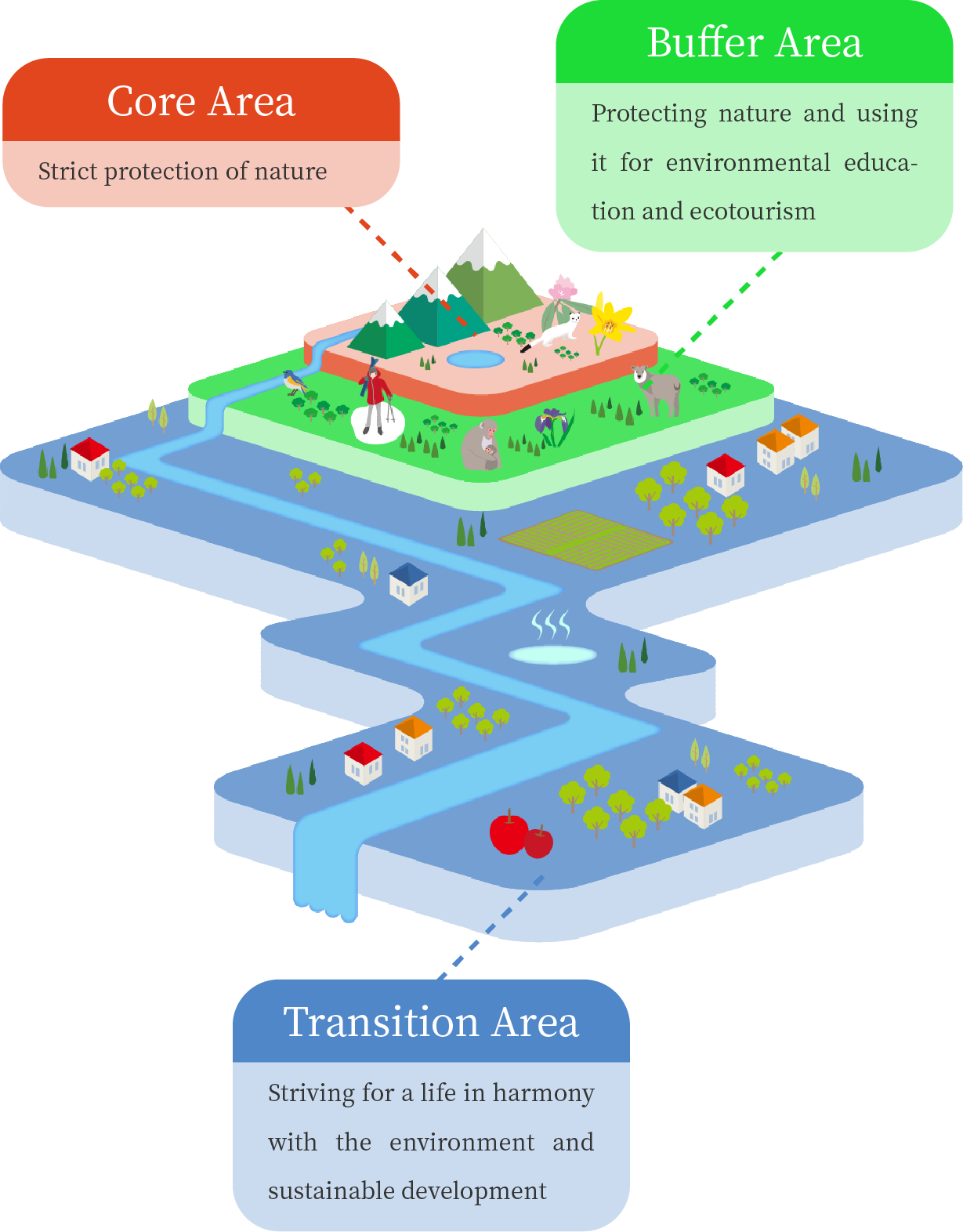What is a Biosphere Reserve
Biosphere Reserves are referred to as UNESCO ECO parks within Japan.
On one hand, World Heritage Sites aim to protect untouched and pristine nature. On the other hand, a Biosphere Reserve is a program that promotes the protection of the ecosystem and the creation of a sustainable society where people and nature can live in harmony.

Purpose and Registered Areas
The approval of this area as a Biosphere Reserve means that the rich natural environment of this area and the local traditions, culture, and industries that have been used while preserving it are internationally recognized as a "society where humans and nature live together". At the same time, it is expected to serve as a model for other regions that face similar social issues such as climate change, loss of biodiversity, and maintaining a balance between the use and conservation of local resources.
Currently, there are 727 Biosphere Reserves registered in 131 countries (as of September 2021), with 10 in Japan including Shiga Kogen Biosphere Reserve.
The functions and the three areas of a Biosphere Reserve
In order to achieve its objectives, a Biosphere Reserve has three functions: "conservation (preservation of biodiversity)," "economic and social development," and "academic research support." Each of these functions is not independent, but rather interacts with and enhances each other. There are three regions that fulfill these functions.











